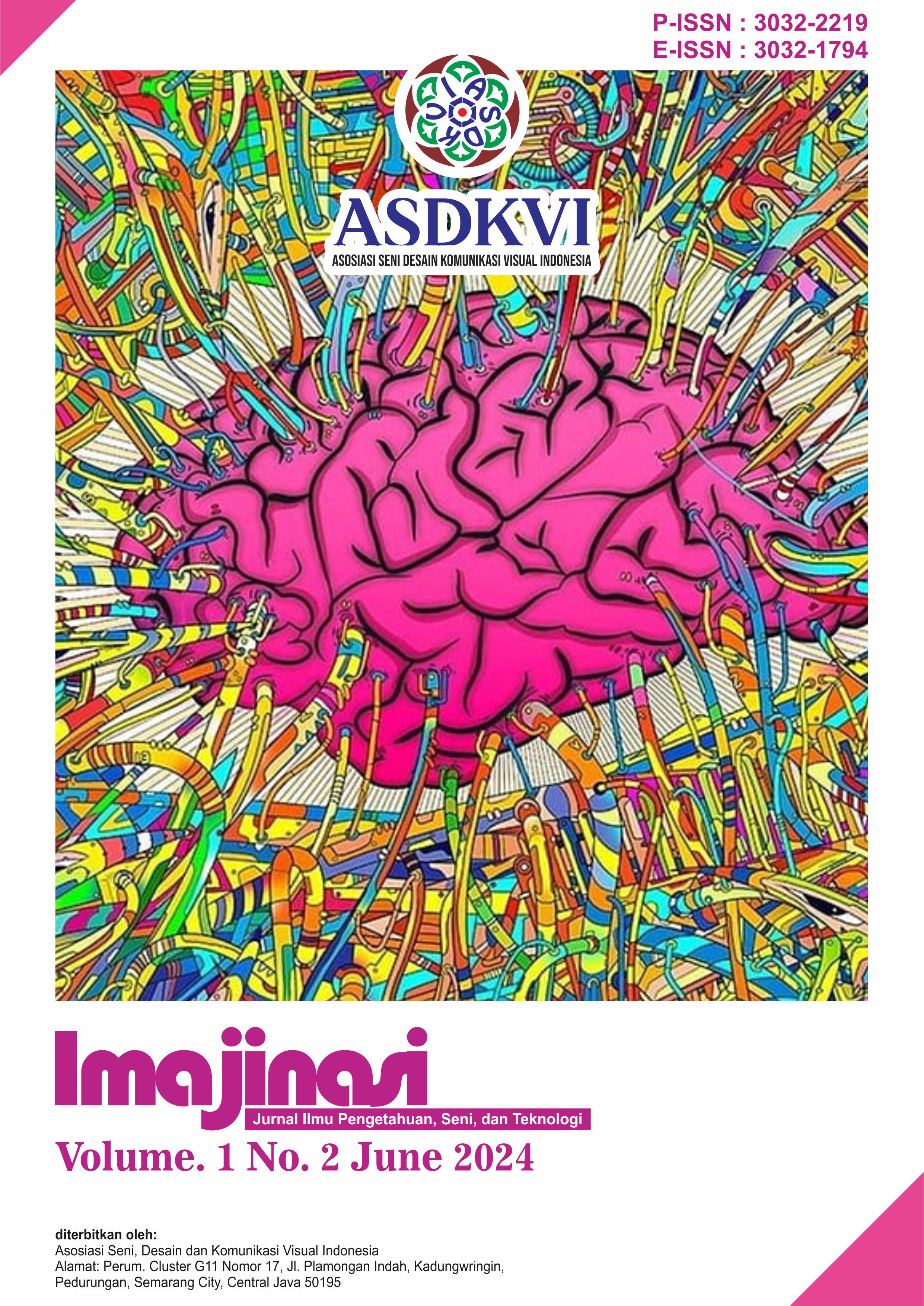Budaya Tradisional Tarian Lahbako Jember Sebagai Upaya Pelestarian Sekaligus Pengenalan Kepada Generasi Muda
DOI:
https://doi.org/10.62383/imajinasi.v1i2.149Keywords:
Lahbako Dance, Jember Culture, Structural FunctionalismAbstract
This research will discuss the community's efforts in maintaining the heritage of the ancestors given, namely the Lahbako dance. Lahbako dance is a typical Jember dance, where this dance exists to show a series of tobacco processing from planting to packaging tobacco. This arian can be said to be a tradition that is carried out every time tobacco planting and has become one of the icons of the city of Jember. It is well known that technological development has been increasingly rapid, and young people are starting to be reluctant to learn or just find out what has become the history of their own nation. The existence of the Lahbako dance which used to be a tradition during the harvest season, is now also used as a tourist attraction, so it can be said that there is a shift in cultural functions. Therefore, efforts are needed to introduce all groups, especially young people so that they can continue to preserve or innovate the culture. In this study we use Robert K. Merton's theory of Structural Functionalism, which emphasizes the need to understand the many functions associated with society, in order to maintain the social structure in society. The functions in question are dysfunction, latent function, and manifest function. In this research using qualitative research methods, with an ethnographic approach.
References
Creswell, J. W. (2015). Penelitian kualitatif & desain riset. Yogyakarta: Pustaka Pelajar.
Ginting, N. (2005). Teknologi daur ulang limbah cair. Yogyakarta: Gadjah Mada University Press.
Istriyani, R. (2024). The transformation of tourism villages through social capital and leadership in Turi District, Sleman, Yogyakarta. Journal of Contemporary Sociological Issues, 4(1), 42-63.
Mustika, I. W. (2007). Membangkitan kembali tari Bedoyo Tulang Bawang di Kota Menggala Lampung. Jurnal Humaniora, 19, 135-142.
Nabila, S. (2022). Pengenalan tari Lahbako sebagai bentuk kepedulian budaya lokal Jember. ResearchGate. Retrieved from https://www.researchgate.net/
Poloma, M. M. (2003). Sosiologi kontemporer. Jakarta: Divisi Buku Perguruan Tinggi.
Prasetyo, H., Rosa, D. V., Astuti, R. P., Satria, R. T., Ramadani, R. D., Permata, A. D., & Ambarwati, S. D. (2019). Two versions of Lah Bako dance: Representing agricultural working class and identity creation. KARSA: Jurnal Sosial dan Budaya Keislaman (Journal of Social and Islamic Culture), 27(2), 290-311.
Raho, B. (2021). Teori sosiologi modern (Edisi Revisi). Maumere: Ledalero.
Rosa, D. V. (2017). Ruang negosiasi perempuan di balik revolusi kopi Using. Jurnal Sosiologi Pendidikan Humanis, 2(2), 63-73.
Sukoco, S. A., Wulandari, Y., Oktavia, O., & Andriyanto, A. (2022). Sociocultural existence of Lahbako dance through the marketing of events and festivals. International Social Sciences and Humanities, 1(2), 278-284.
Downloads
Published
How to Cite
Issue
Section
License
Copyright (c) 2024 Imajinasi : Jurnal Ilmu Pengetahuan, Seni, dan Teknologi

This work is licensed under a Creative Commons Attribution-ShareAlike 4.0 International License.





